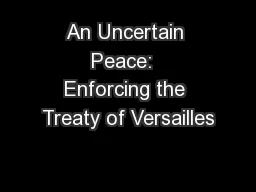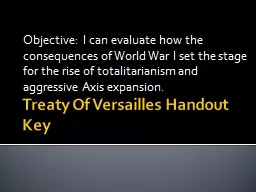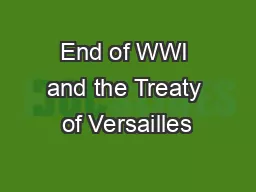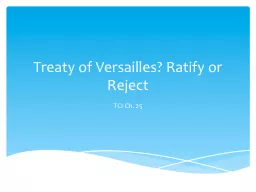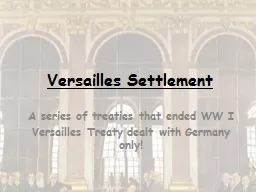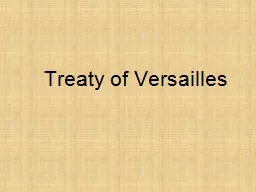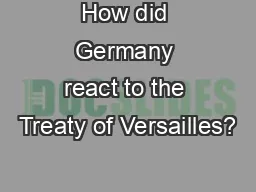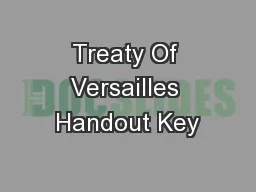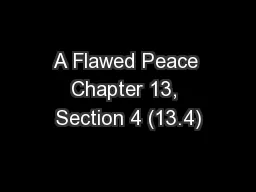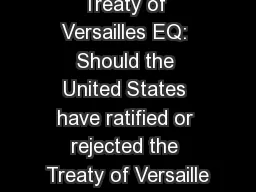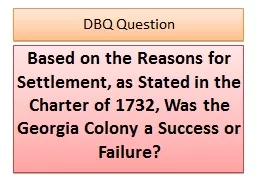PPT-An Uncertain Peace: Enforcing the Treaty of Versailles
Author : calandra-battersby | Published Date : 2018-02-24
APEURO Unit 7D Mrs Kray Allied victors found it was nearly impossible to put Humpty Dumpty back together again Revolutionary violence led to the toppling of
Presentation Embed Code
Download Presentation
Download Presentation The PPT/PDF document "An Uncertain Peace: Enforcing the Treat..." is the property of its rightful owner. Permission is granted to download and print the materials on this website for personal, non-commercial use only, and to display it on your personal computer provided you do not modify the materials and that you retain all copyright notices contained in the materials. By downloading content from our website, you accept the terms of this agreement.
An Uncertain Peace: Enforcing the Treaty of Versailles: Transcript
Download Rules Of Document
"An Uncertain Peace: Enforcing the Treaty of Versailles"The content belongs to its owner. You may download and print it for personal use, without modification, and keep all copyright notices. By downloading, you agree to these terms.
Related Documents

